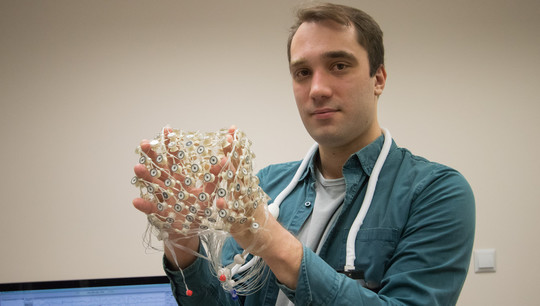Scientists Determine Amount Of Human Working Memory Depends On Attention Control
The amount of a human’s working memory depends on the ability to control attention, rather than on selective attention. This conclusion was reached by a team of scientists from Russia (UrFU, Psychological Institute of the Russian Academy of Sciences, Lomonosov Moscow State University) and Germany, who conducted a study of cognitive factors, which determine individual differences in working memory capacity. The study was published in Behavioral Sciences.
Operational (or working) memory is a set of processes for storing and temporarily using information to understand speech, read, apply mathematical skills, learn, and reason. Is a type of short-term memory. Scientists have found out: the better a person concentrates, the more information can be stored and retained in mind.
“Working memory is a process of retaining information and letting it be used for other cognitive processes. To memorize something, we first need to put the information into working memory. For example, when we need to remember and enter six numbers to pay for an online order, we must first put the numbers into working memory and only then type on the keyboard. The capacity of working memory, i.e. how much information we can retain, largely defines our success in studying, working, and solving any tasks,” says Alexander Kotyusov, a Junior Researcher at UrFU Academic and Research Laboratory of Neurotechnologies.
The experts considered two main factors that are related to the amount of working memory – attention control and selective attention. Attention control is the process of keeping focus on a particular task and resisting disturbing information. For example, the ability to avoid distraction by background noise during exam preparation in a crowded hallway is measured by the extent of controlling attention. Selective attention is the ability to find important information or an object among other similar ones. For example, finding keys among the things scattered in the mess on your desk.
The study was conducted on a Russian-speaking sample of 111 people between the ages of 18 and 37. Participants performed various working memory tasks: memorizing and reproducing rows of numbers, letters, and simple colored objects. To assess selective attention, they were asked to solve a visual search task: to find one letter L among a set of letters T. In order to determine the ability to control attention, the participants had to respond to a single presented stimulus and ignore a competing one (e.g., to read a word, but not pay attention to its contradictory color or to direct their eyes in a certain direction). Finally, by using statistical modeling techniques, scientists confirmed that attention control and working memory capacity are quite strongly related, whereas selective attention and working memory are independent processes.
“There are many foreign studies on a similar topic. The peculiarity of our study was to check the regularities on the Russian sample. In other words, we have proved that cultural and linguistic effects have little influence on cognitive processes. However, the main novelty of the study lies in the fact that the selective attention factor has been additionally investigated: it proved not to be related to the capacity of working memory. Our argument is that there is no connection between these two processes after all,” adds Alexander Kotyusov.
The scientists plan to investigate the factors of individual differences further: what may be the differences in brain functioning in people with small and large working memory capacities. Such research may provide a psychophysiological model of differences in working memory, which is important from a fundamental point of view, as well as for the diagnosis and development of cognitive abilities.

